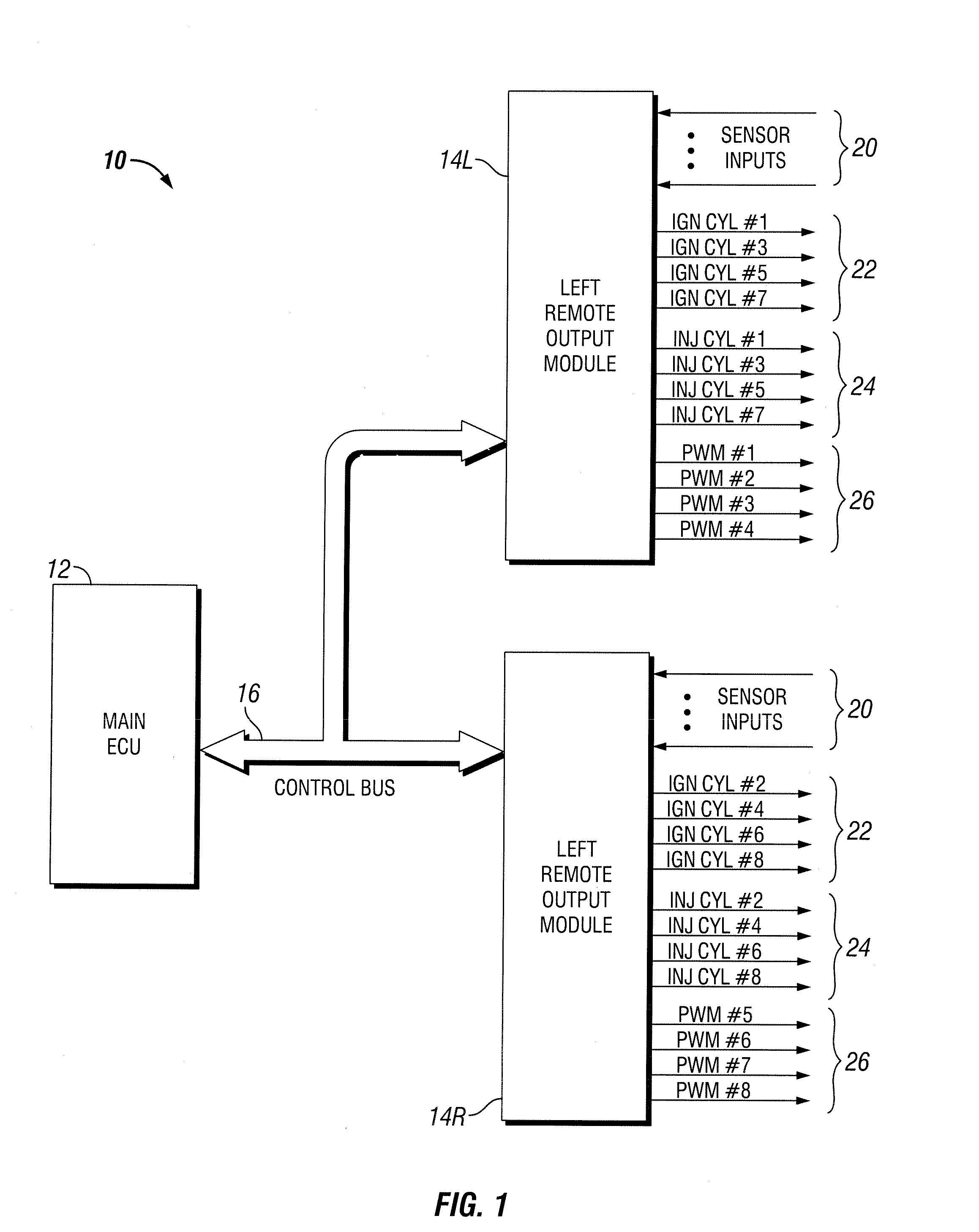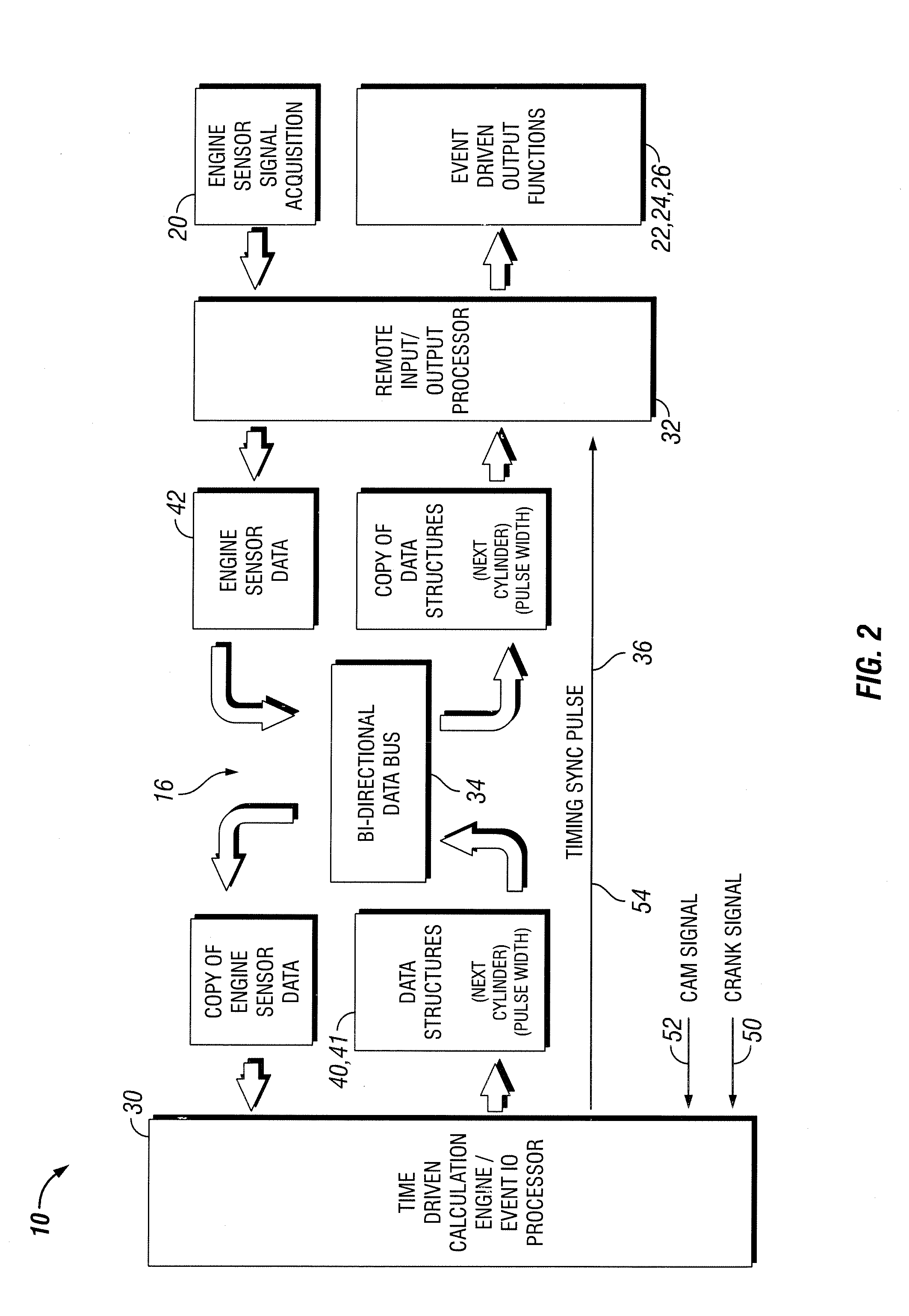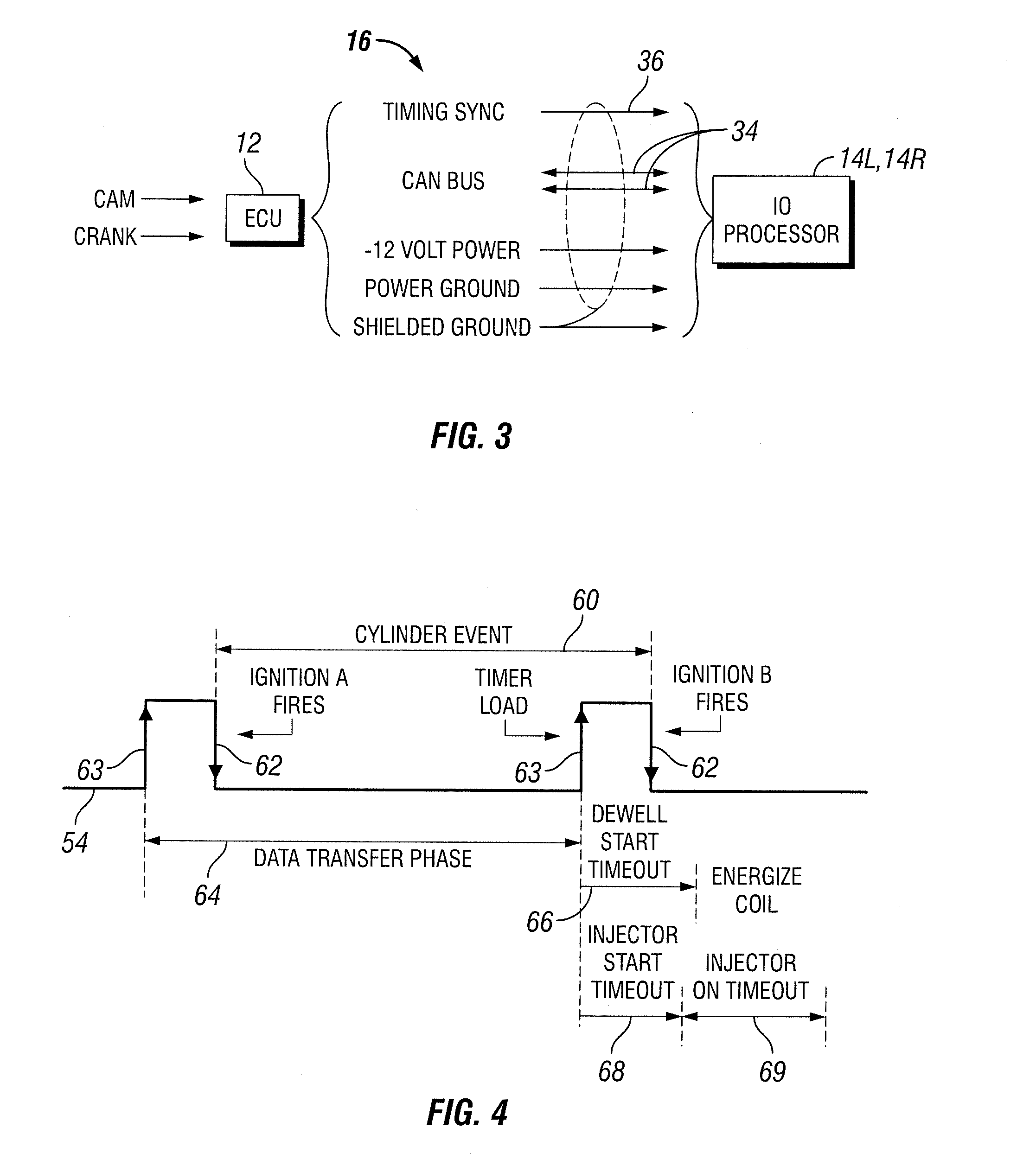Engine control using an asynchronous data bus
a data bus and control system technology, applied in the direction of data switching network, electric control, ignition automatic control, etc., can solve the problems of increasing complexity, reducing the efficiency of the engine, so as to achieve the effect of superior aesthetic appeal
- Summary
- Abstract
- Description
- Claims
- Application Information
AI Technical Summary
Benefits of technology
Problems solved by technology
Method used
Image
Examples
Embodiment Construction
[0029]A decentralized EFI ECU system 10 with distributed processing for a V-8 engine is shown in FIG. 1. System 10 includes a main ECU module 12 and left and right bank remote input / output modules 14L, 14R. Each remote module includes one or more input channels 20 for sensor inputs, four ignition outputs 22, and four fuel injector outputs 24. Additionally, each remote module may optionally include a number of pulse width modulation (PWM) outputs 26, which may be used for electronic throttle control, variable valve timing, or idle air motor actuation, for example. A bidirectional ECU control bus 16, as described below, operatively connects main ECU 12 to left and right bank remote modules 14L, 14R.
[0030]FIG. 2 illustrates the basic topology of the distributed ECU system 10. One or more remote processors 32 (of the left or right bank remote module 14L, 14R, for example) receive signals 20 from various engine sensors and encode the sensor data into various sensor data structures, or me...
PUM
 Login to View More
Login to View More Abstract
Description
Claims
Application Information
 Login to View More
Login to View More - R&D
- Intellectual Property
- Life Sciences
- Materials
- Tech Scout
- Unparalleled Data Quality
- Higher Quality Content
- 60% Fewer Hallucinations
Browse by: Latest US Patents, China's latest patents, Technical Efficacy Thesaurus, Application Domain, Technology Topic, Popular Technical Reports.
© 2025 PatSnap. All rights reserved.Legal|Privacy policy|Modern Slavery Act Transparency Statement|Sitemap|About US| Contact US: help@patsnap.com



